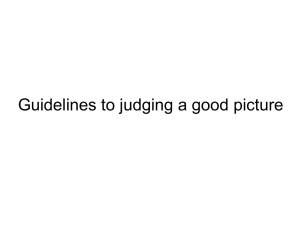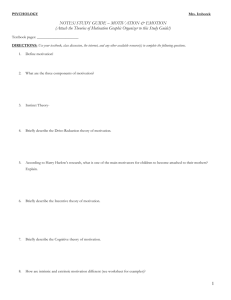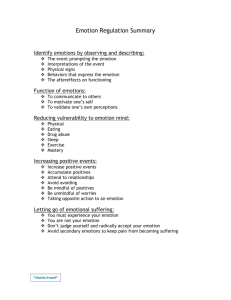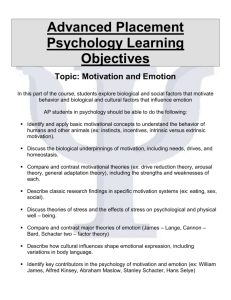Capturing the Audience: Using the Figure to Invoke Emotion
advertisement
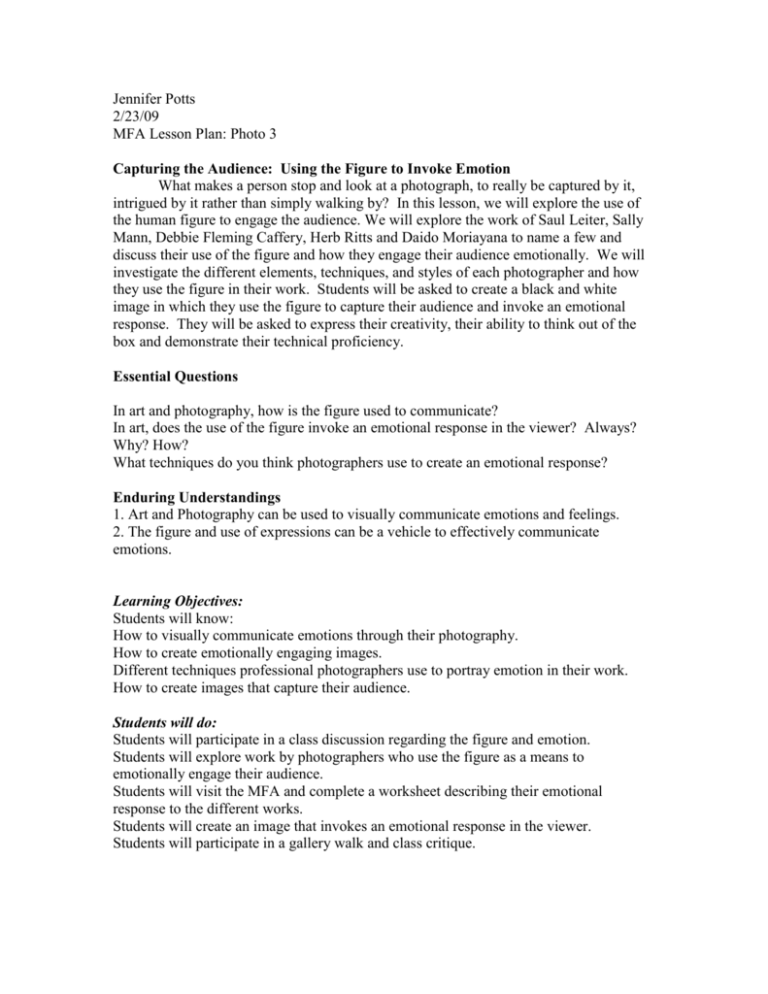
Jennifer Potts 2/23/09 MFA Lesson Plan: Photo 3 Capturing the Audience: Using the Figure to Invoke Emotion What makes a person stop and look at a photograph, to really be captured by it, intrigued by it rather than simply walking by? In this lesson, we will explore the use of the human figure to engage the audience. We will explore the work of Saul Leiter, Sally Mann, Debbie Fleming Caffery, Herb Ritts and Daido Moriayana to name a few and discuss their use of the figure and how they engage their audience emotionally. We will investigate the different elements, techniques, and styles of each photographer and how they use the figure in their work. Students will be asked to create a black and white image in which they use the figure to capture their audience and invoke an emotional response. They will be asked to express their creativity, their ability to think out of the box and demonstrate their technical proficiency. Essential Questions In art and photography, how is the figure used to communicate? In art, does the use of the figure invoke an emotional response in the viewer? Always? Why? How? What techniques do you think photographers use to create an emotional response? Enduring Understandings 1. Art and Photography can be used to visually communicate emotions and feelings. 2. The figure and use of expressions can be a vehicle to effectively communicate emotions. Learning Objectives: Students will know: How to visually communicate emotions through their photography. How to create emotionally engaging images. Different techniques professional photographers use to portray emotion in their work. How to create images that capture their audience. Students will do: Students will participate in a class discussion regarding the figure and emotion. Students will explore work by photographers who use the figure as a means to emotionally engage their audience. Students will visit the MFA and complete a worksheet describing their emotional response to the different works. Students will create an image that invokes an emotional response in the viewer. Students will participate in a gallery walk and class critique. Key Terms Figure: representation of a human being in 2D or 3D Emotion: A strong feeling about someone or something Angles: A position from which somebody can look at something. Pattern: A regular or repetitive form, order, or arrangement Texture: The feel or appearance of a surface Composition: In a photograph, the shapes, lines, angles, color and tones, patterns and depth of the photograph that make up the composition. Framing: what the photographer decides to include in the photograph. Mood: How the picture (or artwork) makes you feel. Can create mood through lighting, color, texture etc. Depth of Field: zone from the front to the back of a scene within which elements will be rendered with sharpness. In portraiture, often use shallow depth of field to focus on the person with the exception of environmental portraiture in which the person’s environment is important. Materials 35 mm camera Film Darkroom Lesson Narrative As an introduction to this lesson, the class will discuss what they think makes for an engaging image, the kind of image that captures the viewer. They will discuss whether they think the figure is useful in invoking emotion and in communicating with the viewer. The teacher will then present a slideshow on the works of photographers, including but not limited to, Sally Mann, Debbie Fleming Caffery, Saul Leiter and Herbs Ritts. The class will discuss whether they think these photographers were successful in capturing the viewer and the techniques that the photographers used to do so. The class will then travel to the MFA where they will view these works as well as others that embody communication through the figure. Students will fill out a worksheet detailing their responses to certain pieces and describe, in detail, the piece that had the most influence on them. After the MFA, students will be given a shooting assignment in which they must use the figure to invoke emotion in their audience. As this is a Photo 3 class, students will be asked to use their creativity and avoid cliché ideas. Students will print 1 image that they think best conveys emotion and print this demonstrating their creativity and technical proficiency in the darkroom. The final print will be matted and hung gallery style. The class will have a gallery walk, in which the students write down their own personal response for each piece. The personal critique will involve discussion with the photographer, their thoughts, what they were trying to convey, whether it was successful and ideas for a different approach. Resources MFA educator’s onlineGallery-Communicating Through the Figure Herb Ritts Resources Sallyman.org Debbieflemingcaffery.com Artwork.com
